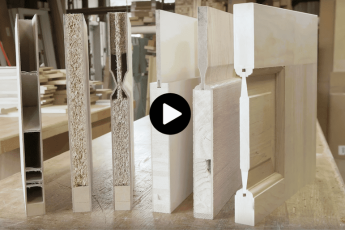Whether you’re looking to make a room fan quieter or simply want to reduce its noise, there are a few things you can do to reduce its noise. You can place it on a flat surface, use a variable resister, or even change the blades.
Placing a fan on a leveled surface
One of the easiest ways to make your room fan quieter is to make sure it is mounted on a level surface. This can be achieved by placing the fan on a table, desk, or floor. This should be done at all times. By doing this, you will be able to avoid clicking and rattling noises.
The base of a room fan can make a loud rattle if it is sitting on an uneven surface. If it is not level, you can always move the fan to a level spot. You can also make sure the fan is properly supported by placing a thick rug underneath it. Proper cleaning and maintenance is essential to avoid noise issues. You should also unplug the fan when cleaning.
Another method to make a room fan quieter is to align the blades. If the blades are not aligned properly, the fan will wobble and cause noise. To align them properly, lay the fan blades on a flat level surface. Make sure the edges are touching the lower surface. You can also check the alignment by placing the fan on a leveled surface like a cupboard. Also, make sure to replace damaged fan blades as soon as possible.
Placing the fan on a flat surface makes the room fan quieter by providing balanced airflow. It also limits the wobbling of the fan. You can also use adjustable feet to level the fan. Hard surfaces tend to amplify the noise of the fan blades, but soft surfaces will absorb the noise.

Using a variable resister
If you’d like to reduce the noise made by your room fan, try using a variable resister. This will reduce the fan’s speed and won’t harm the fan or extension cord. Using a variable resister will also reduce the power flowing through the cord, so it won’t overheat. Typically, the slower the fan turns, the less noise it will make.
Cleaning the fan blades
One way to make a room fan quieter is to clean the blades. Dust and dirt can cause the fan to wobble and create a lot of noise. Using a wet sponge or crevice cleaner, clean the blades thoroughly. Dust and dirt can also wear the bearings in the fan and increase its noise. If you notice rattling or grinding noise, try to use a silicone sealant to stop the noise.
While cleaning the fan blades is essential, other parts of the fan are also susceptible to dust and debris. If this does not solve the problem, you may have to check other parts of the fan. Some fans have a foam cushion between the blades. This cushion helps reduce noise, but if it is damaged, it will make the fan noisy.
You can get replacement blade cushions from your local hardware store. You can also use thick foam or cardboard to pad the blades. Make sure to make a hole in the center of the foam or cardboard so that the padding is flush with the blades. If this does not work, you can try using an old pillow or towel instead. You can use a cleaning agent to remove the grease that has built up on the blades.
If the noise is bothersome, you can consider installing noise suppression mats beneath the fans. You can also make the fans quieter by replacing the blades if they are damaged. Another way to make a room fan quieter is to clean the blades. Dust buildup on the blades can make the fan louder. It can get up to 50 decibels!
Changing the blades
To make a room fan quieter, you can make adjustments to its blades. Many fans have a blade hub that separates the blades from the motor. In order to make your fan quieter, you must secure the blade hub in its proper position. Once you’ve done this, turn on the fan and test the noise. If the fan still makes a noise, you’ll need to tighten the blades.

Room fans with oscillating features can produce a lot of noise. This is because the blades are constantly moving, creating turbulence. Most of the noise comes from the air being pushed out by the fan, and very little noise comes from the air that is sucked in.
Changing the blades of a room-fan can make it quieter by reducing the speed of the motor. You should also lubricate the blades every year to prevent them from wearing out prematurely. You can do this by spraying oil on the pin holding the blades. If this doesn’t work, you should change the blades and install a new fan.
If you have a room-fan that is making a lot of noise, you may need to change the blades. This is easier to do with room-fans than with ceiling-fans. You’ll need a screwdriver and a damp rag. You’ll also need to remove the fan’s blade cap.
If your fan has warped blades, they can cause vibrations and noise. Changing the blades can also increase the life of the fan and prevent it from making as much noise as it used to.
Changing the motor
One way to make a room fan quieter is to change the motor. A fan with a damaged motor will not run as quietly as one with a new motor. Changing the motor can be done easily. You can use compressed air to blow out debris that has collected inside the fan. You can also use a hand vacuum to clean the fan. These methods are simple and will improve the noise of the fan.
Another way to make a room fan quieter is to lubricate the motor. It is important to use the correct lubricant when changing the motor. Using the wrong type of oil can cause problems and cause a ceiling fan to run in an uncomfortably loud state. Also, remember to lubricate all parts of the motor, especially the bearings, to avoid clogging and ruining the fan.

Changing the motor of a room fan is a relatively simple task. First, you need to tighten the blade hub. You should then turn on the room fan to test for any noise. If the noise is still there, you may have to secure the blade hub with some padding.
If the motor is causing the noise, try to find out where it’s coming from. Sometimes the cause of the noise is the fan blades themselves, which accumulate dirt over time. Other times the fan motor is broken or worn. If you notice any signs of wear or tear, you may need to replace the motor.
Another method is to make sure that the blades of the room fan are not touching the motor housing. This can cause a short in the lead wire of the motor. If you cannot remove the fan completely, you can use a fan that has adjustable feet to keep it level. If this doesn’t work, you might need to replace the fan. You should also seek the assistance of a certified electrician to handle any electrical work.





